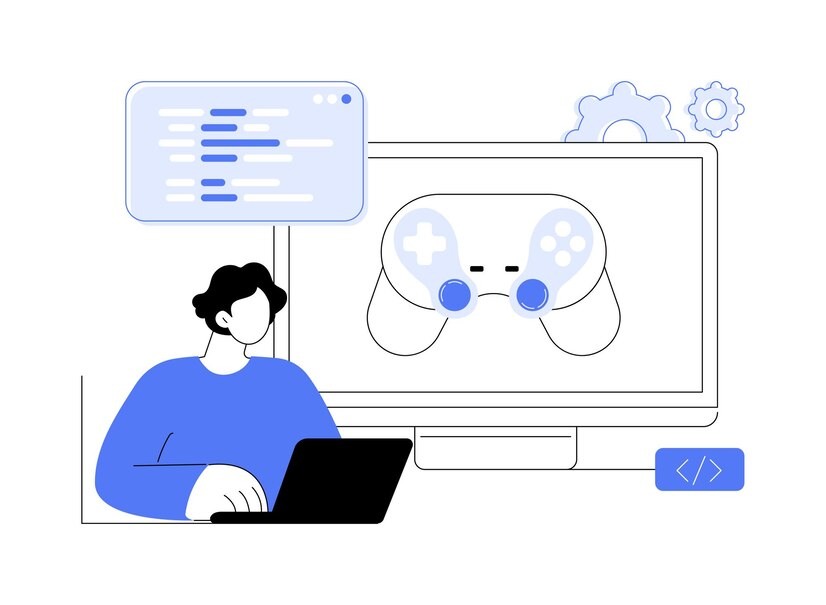Designing a fun and challenging game requires careful thought and planning. The right balance between difficulty, engagement, and enjoyment can distinguish between a successful game and one that fails to capture players’ attention. Essential game design principles and practical tips on creating games that keep players entertained while offering them the right amount of challenge.
Understanding Your Audience
Before you even begin designing, it’s crucial to understand who your game is for. Different types of players enjoy different kinds of games, and knowing your audience helps you tailor your design to meet their expectations.
Why It Matters:
- Player Engagement: If you know your audience, you can design a game that speaks to their interests and keeps them engaged.
- Difficulty Levels: Different groups prefer different levels of difficulty. Casual players want a relaxed experience, while hardcore gamers may seek more complex challenges.
- Genre Preferences: Understanding whether your audience prefers strategy, action, puzzle, or role-playing games is key to designing features they’ll love.
Key Factors to Consider About Your Audience
- Age range and demographics.
- I preferred game genres.
- Average gaming skill level.
- Interests and hobbies outside of gaming.
- Devices they primarily use (PC, console, mobile).
Balancing Challenge and Fun
One of the most important elements of game design is finding the right balance between challenge and fun.
Tips for Achieving Balance:
- Gradual Learning Curve: Introduce challenges gradually, allowing players to learn the mechanics before increasing difficulty.
- Reward System: Use rewards like points, achievements, or in-game items to encourage players to progress.
- Optional Difficulty Settings: Allow players to choose difficulty levels so casual and experienced players can enjoy the game.
Ways to Balance Challenge and Fun
- Introduce new mechanics slowly.
- Use visual and audio cues to help players.
- Allow for skill progression (beginner to expert).
- Offer hints or tools for more difficult sections.
- Avoid sudden, unfair difficulty spikes.
Clear Game Objectives
Players should always know what they’re supposed to do in the game. Clear objectives provide structure and purpose, guiding players through the gameplay while giving them achievable goals.
Why Objectives Are Important:
- Guidance for Players: Clear objectives help players focus on what needs to be accomplished, reducing confusion.
- Motivation to Continue: Achieving objectives gives players a sense of progress and keeps them motivated to play longer.
- Rewards and Progression: When objectives are met, players expect some reward, which keeps them returning for more.
Effective Ways to Set Game Objectives
- Use quests, missions, or levels to structure objectives.
- Show progress through visual indicators (like a progress bar).
- Offer rewards for completing tasks.
- Make objectives simple to understand but challenging to achieve.
- Use clear instructions, avoiding vague language.
Intuitive Controls and Interface
Good game design ensures that controls are easy to learn but offer depth for experienced players. An intuitive interface and control scheme allow players to focus on the game, not how to play it.
Tips for Creating Intuitive Controls:
- Simplicity First: Start with basic controls that are easy to grasp. Allow players to learn the essentials before introducing more advanced options.
- Responsive Input: Ensure the game responds quickly to player actions, reducing frustration from laggy or unresponsive controls.
- Adaptable Options: Offer customizable controls so players can choose the setup that works best for them.
Tips for Designing an Intuitive Interface
- Keep menus simple and organized.
- Use familiar symbols and icons (like a gear for settings).
- Provide tooltips or tutorials for new mechanics.
- Make important buttons easily accessible.
- Ensure that interface elements don’t clutter the screen.
Storytelling and Immersion
A strong storyline can turn an ordinary game into an unforgettable experience. Immersing players in a compelling narrative keeps them emotionally invested and eager to continue playing.
How to Build an Immersive Story:
- Strong Characters: Develop characters that players care about.
- Engaging Plot: The plot should have twists, challenges, and meaningful outcomes based on player actions.
- World-Building: Create a believable and engaging world that players want to explore.
Key Elements of Effective Game Storytelling
- Character development and backstory.
- Emotional stakes and player investment.
- Choices that affect the outcome.
- Detailed world-building (maps, cultures, etc.).
- The narrative unfolds naturally as the game progresses.
Game Mechanics and Innovation
While many successful games rely on tried-and-true mechanics, adding unique or innovative elements can make your game stand out.
Tips for Developing Game Mechanics:
- Core Mechanics: Focus on one or two core mechanics that drive the game. For example, jumping and climbing would be key mechanics in a platformer.
- Innovate Wisely: Innovation should serve the game, not complicate it. A new mechanic should feel natural, not forced.
- Consistency: Ensure that the mechanics work consistently throughout the game. Inconsistent rules can frustrate players.
Game Mechanics to Consider
- Movement and interaction (jumping, running, flying, etc.).
- Combat systems (melee, ranged, strategy-based).
- Resource management (gathering, crafting, upgrading).
- Puzzle-solving mechanics.
- Multiplayer and cooperative mechanics.
Graphics and Aesthetic Appeal
A visually appealing game attracts players and keeps them engaged. However, graphics should support the gameplay and not overshadow it. Even simple graphics can be effective if used creatively.
Guidelines for Game Graphics:
- Match Graphics to the Game Style: Whether your game is realistic or cartoonish, the graphics should fit the overall tone and style of the game.
- Optimize for Performance: High-end graphics are great, but they shouldn’t come at the expense of smooth gameplay.
- Use Color and Lighting Effectively: Color schemes and lighting can set the mood for different game parts and guide the player’s attention.
Key Elements of Effective Game Graphics
- Consistent art style.
- Smooth animations.
- Well-designed characters and environments.
- Effective use of color to set the mood.
- Graphics optimized for different devices and platforms.
Sound Design and Music
Sound design is often overlooked but can significantly impact a player’s immersion in a game. The right sound effects and music enhance the mood and reinforce gameplay elements.
Importance of Sound Design:
- Enhances Immersion: Well-timed sound effects make actions feel more impactful and immersive.
- Sets the Tone: Music can set the emotional tone of a scene or level, whether it’s tense, exciting, or relaxed.
- Audio Cues: Sound effects can also act as cues to alert players about in-game events (like an enemy approaching).
Sound Design Tips for Game Developers
- Use high-quality sound effects for actions (jumping, fighting, etc.).
- Choose background music that fits the game’s mood.
- Adjust volume levels for balance between sound effects and music.
- Include audio cues for important game events.
- Ensure that the sound design complements the gameplay and is not distracting.
Playtesting and Feedback
No matter how well-designed a game is, playtesting is essential to identify issues and refine the experience. Gathering feedback from players helps you fine-tune difficulty, mechanics, and user experience.
Tips for Playtesting:
- Test Early and Often: Playtest your game throughout development to catch problems before they become bigger.
- Use a Variety of Testers: Different players will give different feedback, so test with a diverse group.
- Encourage Honest Feedback: Players should feel comfortable providing constructive criticism, even if it means changing parts of the game.
Key Points for Effective Playtesting
- Test gameplay for bugs and glitches.
- Get feedback on difficulty and pacing.
- Assess how intuitive controls and mechanics are.
- Ensure objectives and instructions are clear.
- Refine based on player feedback.
Post-Launch Updates and Support
The work doesn’t stop once your game is released. Regular updates and support are essential to keep players engaged and fix any issues that arise post-launch.
Why Post-Launch Support Matters:
- Bug Fixes: No game is perfect at launch, and patches are often needed to fix bugs or improve performance.
- New Content: Regular updates, such as new levels or features, keep players engaged and give them a reason to return.
- Community Engagement: Listening to your player community and implementing their suggestions can help build loyalty and improve the game’s longevity.
Post-Launch Support Strategies
- Regularly updated with new content (levels, skins, etc.).
- Fix bugs and performance issues promptly.
- Actively engage with player feedback.
- Offer downloadable content (DLC) to extend the game’s lifespan.
- Create events or challenges to keep players returning.
Conclusion
Building a fun and challenging game requires a deep understanding of game design principles and attention to detail. By focusing on player engagement, balancing difficulty, and continuously improving the game post-launch, you can create an experience that keeps players returning for more. Use these principles, tips, and practical examples to craft a game that is enjoyable and stands out in a crowded market.

